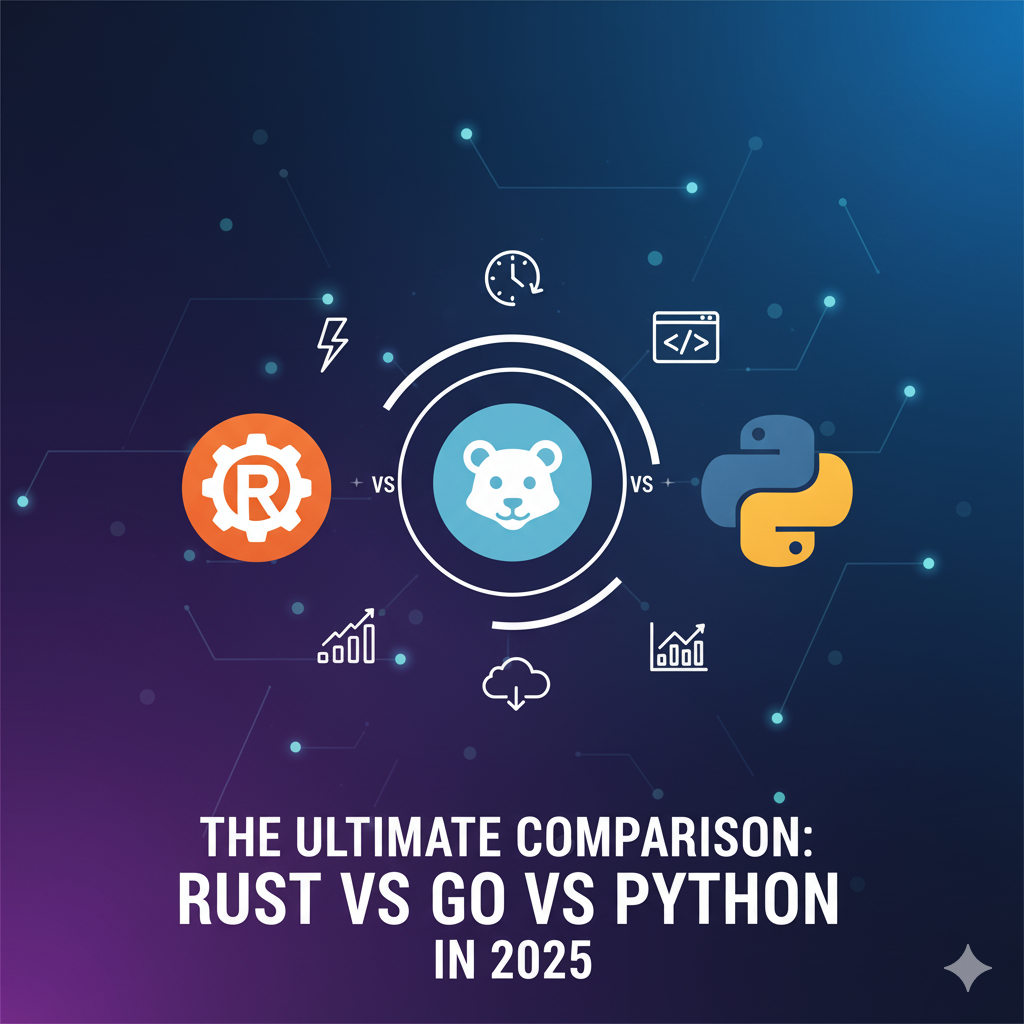The Ultimate Comparison: Rust vs Go vs Python in 2025
Choosing the right programming language is crucial for developers, especially as the tech landscape evolves rapidly. In 2025, Rust, Go, and Python remain some of the most popular languages, each with its own strengths and weaknesses. This comparison dives deep into their features, performance, and use cases to help you make an informed decision.
Overview of Rust, Go, and Python
Rust
Rust is a systems programming language that prioritizes memory safety and performance. Known for its "zero-cost abstractions" and strong concurrency model, Rust is ideal for applications where reliability and speed are paramount.
- Developed by Mozilla, now maintained by the Rust Foundation.
- Focuses on eliminating common programming bugs like null pointer dereferencing.
- Growing ecosystem with frameworks like Actix and Rocket.
Go
Go (or Golang) is Google's answer to simplicity and scalability. It excels in building cloud-native applications, microservices, and distributed systems thanks to its built-in concurrency support via goroutines.
- Developed at Google in 2009.
- Designed for simplicity and ease of use.
- Popular frameworks include Gin and Echo.
Python
Python remains the go-to language for versatility and readability. With its massive community and libraries, Python dominates in fields like data science, artificial intelligence, web development, and automation.
- First released in 1991.
- Easy to learn for beginners.
- Extensive libraries like TensorFlow, Pandas, and Django.
Performance Comparison
| Aspect | Rust | Go | Python |
|---|---|---|---|
| Execution Speed | Lightning-fast | Fast | Slower |
| Concurrency | Excellent | Built-in goroutines | Limited |
| Memory Usage | Efficient | Moderate | High |
Use Cases
When to Choose Rust
Rust shines in scenarios like:
- High-performance applications (e.g., gaming engines).
- Embedded systems.
- Blockchain development.
When to Choose Go
Go is perfect for:
- Cloud-native applications.
- Microservices architecture.
- Networking and distributed systems.
When to Choose Python
Python excels in:
- Data science and machine learning.
- Web development.
- Scripting and automation.
Future Trends in 2025
As we move deeper into 2025, each language is adapting to new challenges:
- Rust: Continued growth in WebAssembly and blockchain development.
- Go: Dominance in cloud infrastructure and DevOps tools.
- Python: Expanded AI applications and integration with quantum computing.
FAQs
Is Rust harder to learn than Go and Python?
Yes, Rust has a steeper learning curve due to its focus on memory safety and advanced features. However, its benefits in performance and reliability make it worthwhile.
Which language is best for beginners?
Python is the easiest to learn and has extensive documentation and community support, making it ideal for newcomers.
Can I use all three languages together?
Yes, many projects leverage multiple languages for different components—for example, using Rust for performance-critical parts, Go for backend services, and Python for AI or scripting tasks.
Conclusion
In 2025, Rust, Go, and Python each hold their ground in the programming world, catering to different needs and use cases. Whether you prioritize performance, scalability, or versatility, understanding their strengths will help you choose the right language for your projects.



